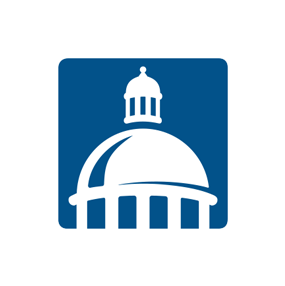There’s some good news for a lot of you parents! Starting July 15, 2021, families with certain incomes will receive direct deposits of between $250 and $300 a month for each child through December 2021.
These payments come from a one-time expanded child tax credit for the 2021 tax year, a part of The American Rescue Plan Act enacted on March 11, 2021. This is the same child tax credit you usually report on your IRS tax forms. But due to the economic impact of the COVID-19 pandemic, lawmakers voted to provide this expanded credit to families now through the end of the year to help families get back on their feet.
First, the details
The America Rescue Plan expanded the tax credit to $3,600 for children younger than 6 and $3,000 for children ages 6 to 17. Families will receive those amounts divvied up July through December 2021.
Families who meet the following annual income thresholds will get the full amount per child:
- Married taxpayers who earn less than $150,000
- Heads of household who earn less than $112,500
- Single-filing taxpayers who earn less than $75,000
Get the most out of those funds
As a financial educator here at SAFE, I am grateful for the opportunity to share financial insights with our members and people in our community. I learn a lot from them too, as they share their personal journeys in our workshops. And the past year and a half has been tough for a lot of families. This money I’m sure will be a huge help to many of you.
Here are some ideas I’d like to share about ways to maximize those tax credit dollars to benefit your kids and your family.
Use it to fill gaps in your budget
If you find that you have more month than money, these funds may help you fill those gaps. A lot of us experienced financial problems as we lost income or faced additional expenses during the pandemic. Maybe you’re behind on some bills, or you’ve had to cut back in some areas. Consider using these funds to get caught up or bring back some of those small joys.
Now may also be a good time to start a monthly budget so you can better track your spending and identify ways to save. SAFE has an easy-to-use Monthly Budget Worksheet to get you started.
Open or add to savings accounts for your children
I cannot recommend enough getting your kids started on their financial journey by helping them open their own savings accounts. A lot of financial institutions, including SAFE, offer accounts especially tailored for children and teenagers that help them learn the basics of saving money and how banking works. This also provides them an important connection with a financial institution that will help them when they launch into adulthood and they open new accounts and apply for credit.
Consider using the money to open savings accounts for your children. To make it tangible for them, withdraw some of the money in cash and give it to them. Then, take a trip to a financial institution (like SAFE!) and use that cash to open a new account. Your children will get to see first-hand how to open an account and that the money goes directly into the account for them to use later.
If your children already have savings accounts, let them deposit some of the cash into their accounts themselves. They will get to see their balances grow!
To open a youth account at SAFE, schedule an appointment at one of our branches. We will set aside time just for you to work with you and your child to set up the account and answer all of your questions. You can open a youth account with as little as $5!
Long-term savings
Certificates are a good way to set aside savings for a certain amount of time and let it grow. There are a number of options out there with various terms, from a few months to several years. SAFE offers an add-on certificate that lets you deposit money to it during the term – and you only need $25 to open. All of our certificates are available to youths, too!
College savings
Kick start or add to your existing college savings plans and accounts. College costs continue to rise, and this money can help your education savings grow. One option is the Coverdell Education Savings Account, which allows you to save up to $2,000 per child per year.
Explore more with SAFE
One thing a lot of us learned this past year is that personal finances are important to pay attention to. SAFE offers several ways for you to take the wheel on your financial journey.
Financial Education webinars
Join me and other SAFE experts in our live, interactive financial education webinars. We share insights on everything from making a budget, the basics of trusts, buying a home, and asset protection options. We’re always adding new topics, so visit safecu.org/events often to see what’s on tap that may be right for you.
Financial Wellness Hub
Learn on your own time with our engaging modules on our Financial Wellness Hub. Answer a few questions about where you are on your financial journey and we’ll create a customized playlist of lessons to help you on your way. You can also choose from a list of ready-to-go playlists such as Building Financial Resilience, Owning a Home, Preparing for Retirement, and Achieving Your Financial Resolutions.
Financial calculators
Want to know how much car or home you can afford? How much you need to save now for your retirement goals? Or how much you can save if you refinance your auto loan? SAFE’s financial calculators shed light on your path to your next big goal.



